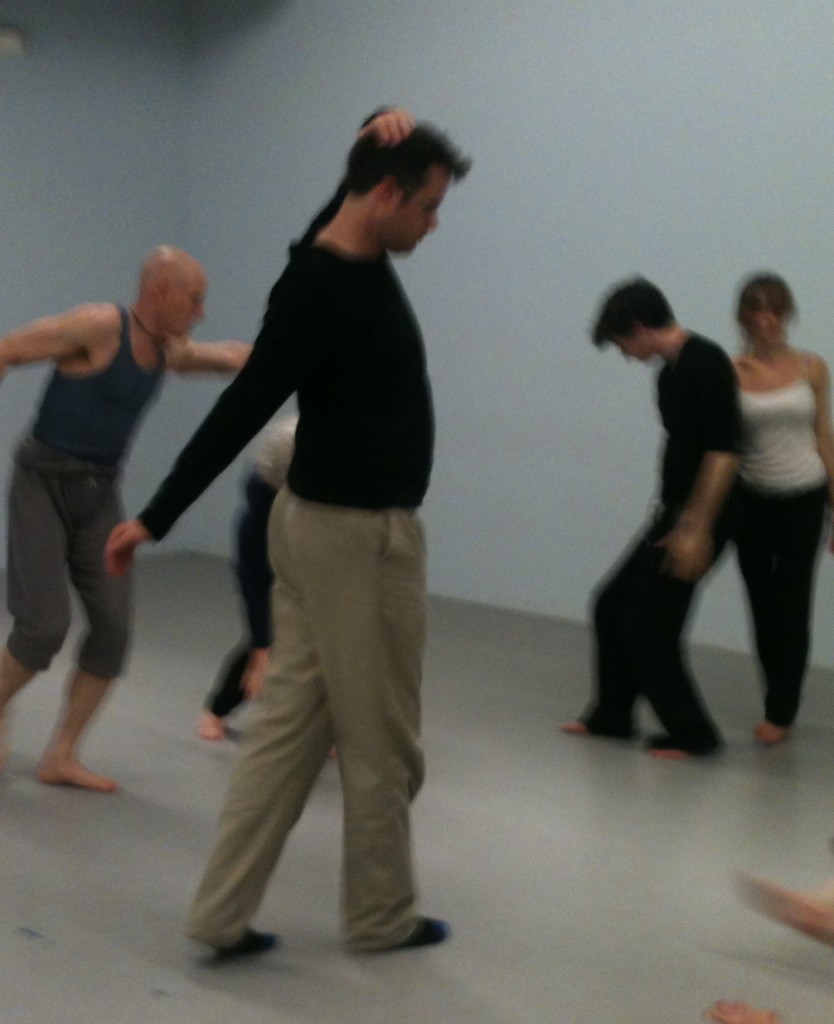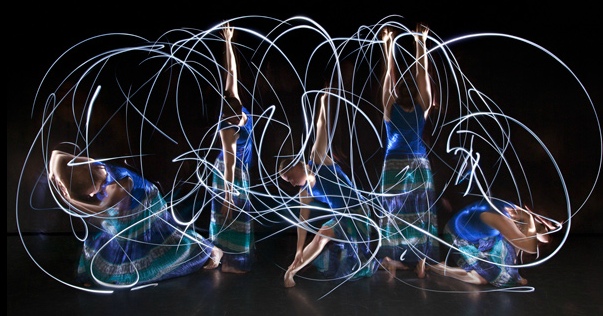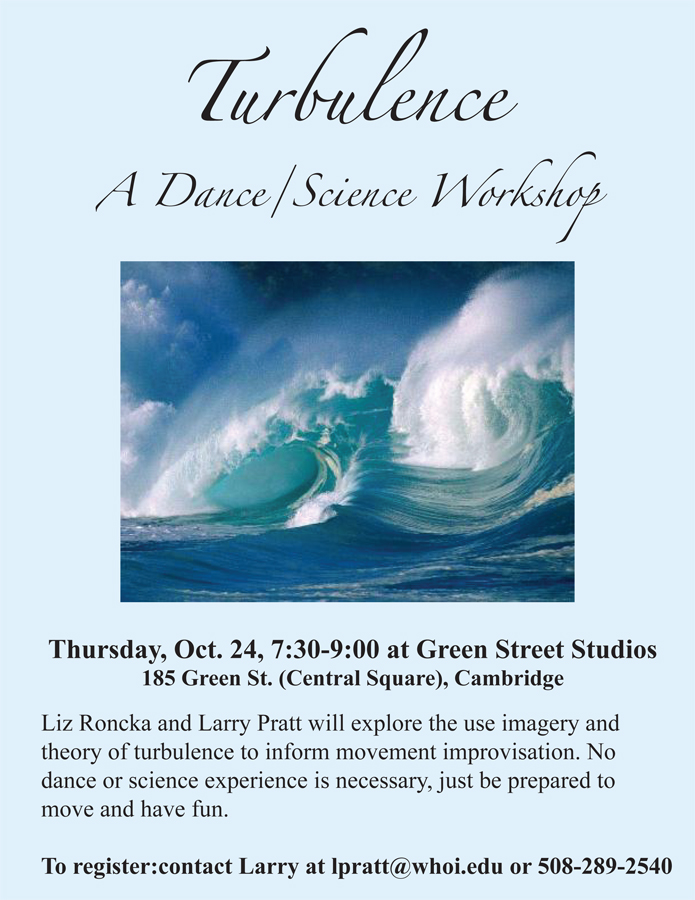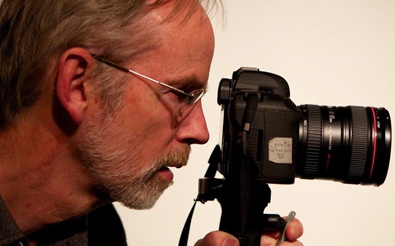Featured Stories | November 16, 2013
Dancing Turbulence
By Genevieve Wanucha
Where I work in MIT’s Green Building, fluid dynamicists use equations derived from Newton’s laws of motion to study turbulence, or the disorganized movement of air and water so complex that physicists such as Richard Feynman and Horace Lamb doubted it could be fully understood. But recent advances in computer modeling are yielding insights into the chaotic fluid flows that surround airplanes and transport energy in the ocean. There’s a more intuitive way to grasp the essence of turbulence, as I learned at the recent Turbulence, A Dance/Science Workshop.
In a spacious grey room at Cambridge’s Green Street Studios, participants of all levels of skill and dance experience devoted an evening to literally embodying eddies, vortices, and energy cascades in spins, whirls, and improvised twirls.

This workshop’s creator, Larry Pratt, a physical oceanographer at Woods Hole Oceanographic Institution, teacher in the WHOI/MIT Joint Program and artist, began the class with the reminder that turbulence is all around us: the sudden rippling of a column of smoke rising from an extinguished candle. The froth emerging as a smooth river runs into a rock. The transient plume as cream swirls into coffee.
Turbulence at the ocean surface, Pratt explained, is composed of eddies, which are swirling patches that carry water up and down in spirals. He ran a computer simulation of 2D turbulence in a slab of water. In the darkened room, blobs of red, yellow, and blue fluid swirled across the screen on the wall, interacting and influencing the shape and motion of other blobs. “What happens in one space can potentially be communicated to a whole body of fluid.” Pratt said. By the same rule, one human body can send energy through a whole ensemble of dancers.
As performing artist Liz Roncka directed, each one of us imagined our self as an eddy spinning either counter clockwise (a cyclone) or clockwise (an anti-cyclone). When two dancers spinning in the same direction passed close by each other, he or she would wrap into the other’s movement and momentarily move as one. When I, an anticyclonic eddy, ended up beside a cyclonic dancer, our movements cancelled out, and we traveled separately but in the same line, until we broke apart and interacted with yet another whirling body.

The music grew more intense, and Roncka nudged up the complexity of our improvisation. We formed larger eddies by joining up in groups, which all adopted the same quality of movement. When an eddy grew more than five dancers thick, the configuration became unstable and disbanded in an array of flailing arms and legs.
Some of us stuck to simple spinning, hanging on to another sweaty hand for dear life. One dancer, Anne-Willem Omta, a marine biogeochemist at MIT, became a Taylor Column, a feature that develops in rotating fluid if disturbed, by standing straight and spinning in place. Those with ballet experience added in elements of modified glissade, assemblé, and pas de borrée—after all, turbulence appears graceful to the human eye. Larry Pratt himself was able to improvise complex movements that responded fluidly to the motion of his partner’s body, inspired by obvious intuition about turbulence.
The human vestibular system, it turns out, can endure only so much Coriolis force. We brainstormed together on how to represent turbulent motion without getting dizzy, and decided to dodge the laws of Nature, perhaps by adopting more staccato moves when vertigo threatened. As Roncka eventually exclaimed, ”If we try and follow the rules of science exactly, we’re just not dancing anymore!” And therein lies the limits of representing turbulence in dance.
Yet the point was not to replicate the technicalities of eddies with our bodies. We were pushed to think beyond the physical. In fact, artistic expression of a scientific theory or invisible natural process is the ultimate way to create metaphor—the word-less communication of a complex idea through emotional impact.

The workshop was far from Pratt’s first time blurring the boundary of art and science. In addition to his years of photographic art, he recently explored the chaotic yet structured and harmonious nature of turbulence in time-lapse photography of moving lights as part of the Synergy Exhibit, a collaboration in which local artists interpreted the work of ocean researchers at MIT and WHOI. (See Sparks Fly as Art and Science Collide in Ocean Stories: A Review)
Likewise, the Dance/Science Workshop is part of a bigger endeavor to interpret scientific concepts in novel, intuitive ways. Pratt plans to use dance as a teaching tool to elegantly and immediately represent to the human mind how eddies transport heat, nutrients, phytoplankton or spilled oil down beneath the ocean surface. Young scientists would explore how to communicate their work to a wider audience, and perhaps gain a more intuitive understanding themselves.







